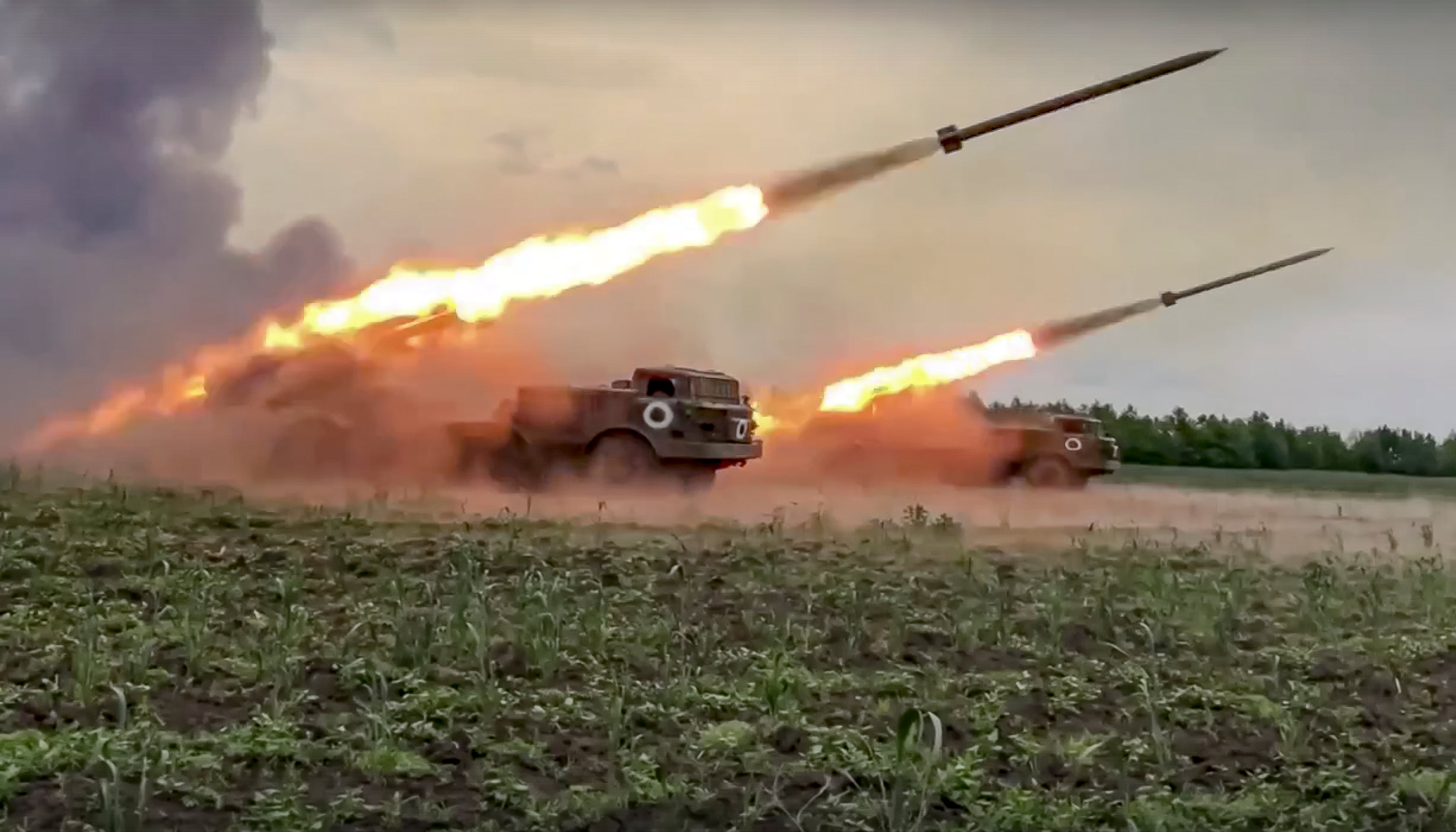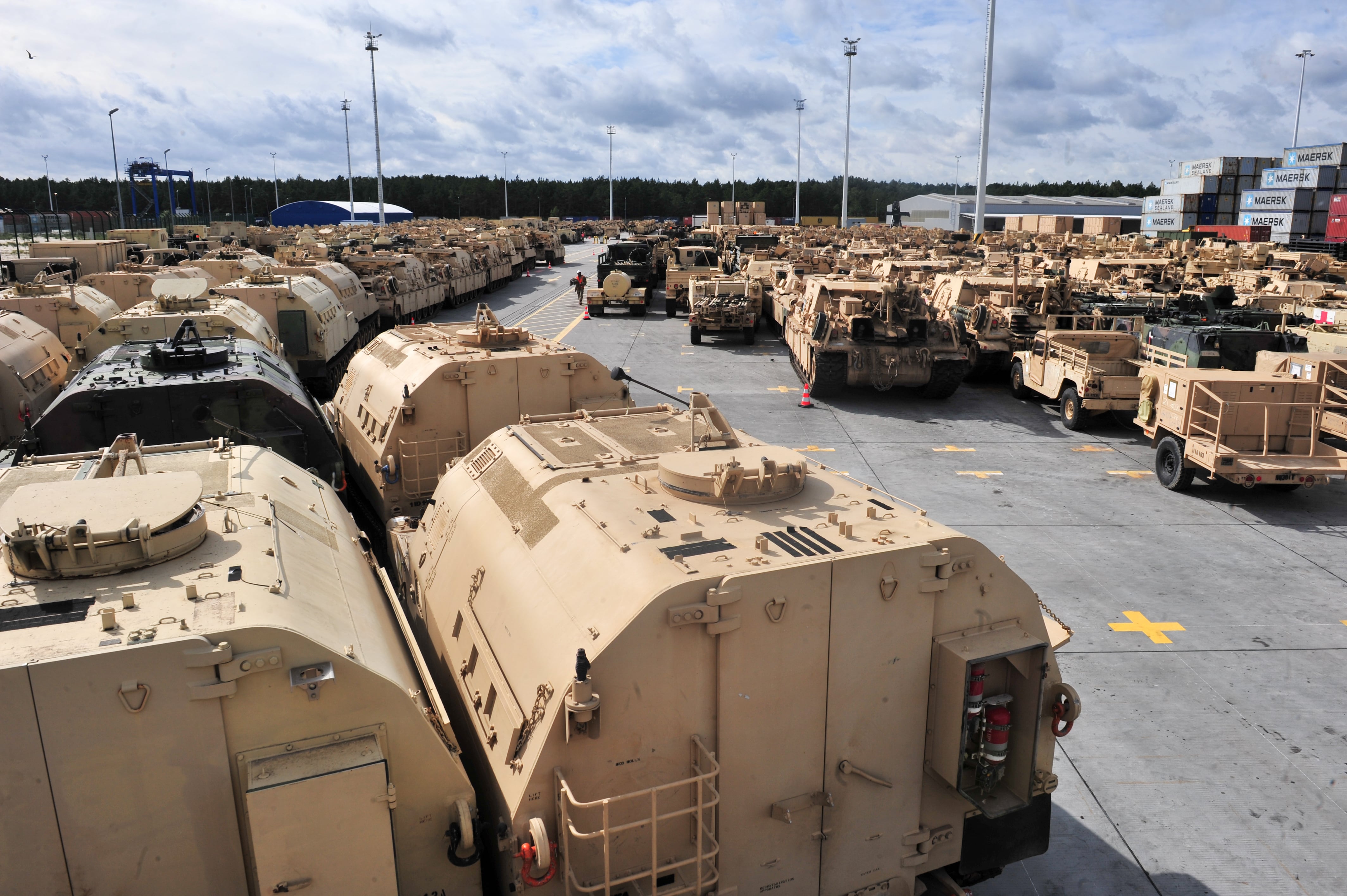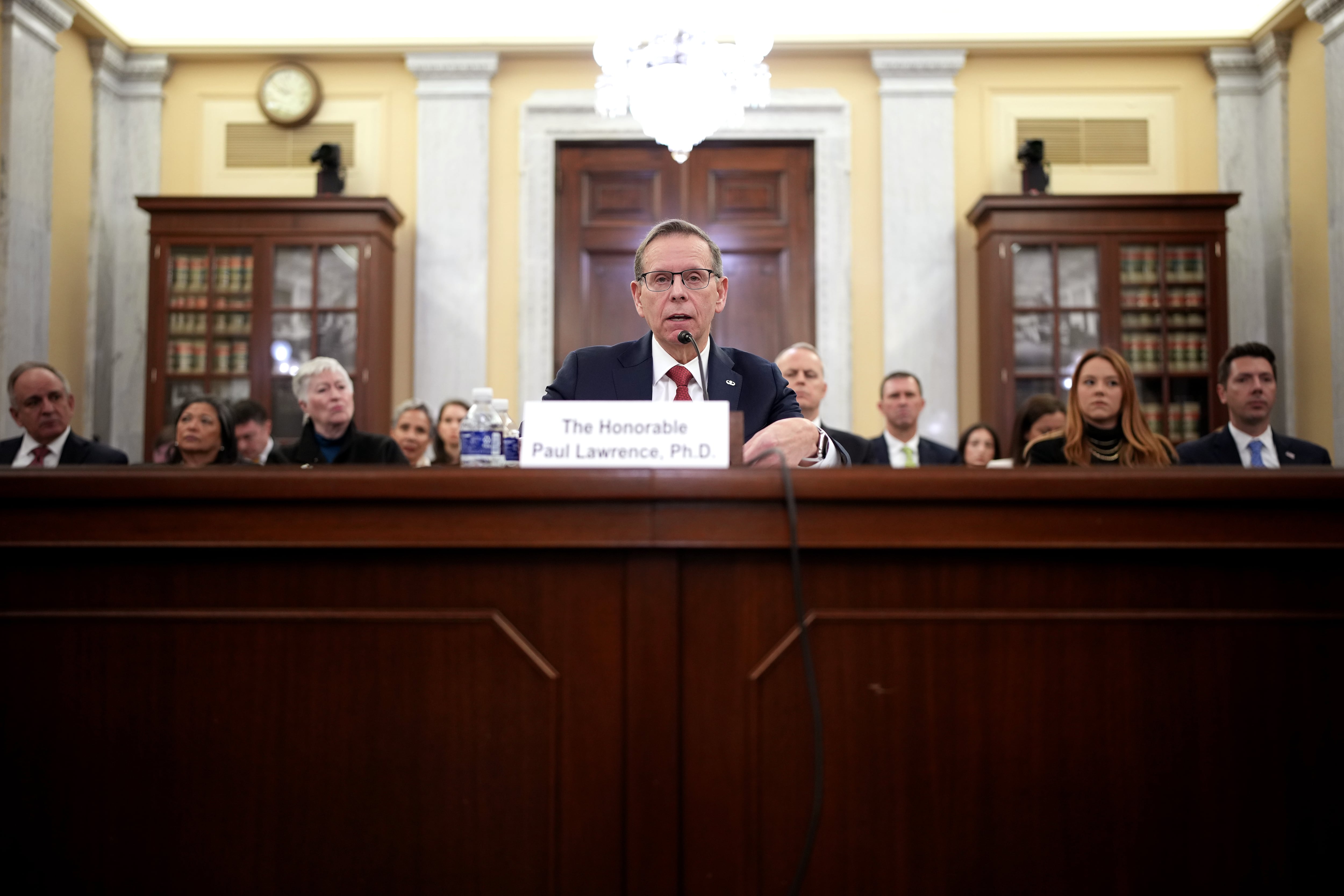WASHINGTON ― The US will send four more high-mobility artillery rocket systems to Ukraine as part of the next military aid package to strengthen Kyiv in what’s become a grinding long-range fires duel, Pentagon officials said Wednesday.
The new M142 High Mobility Artillery Rocket Systems, or HIMARS, will bring the total number committed to Ukraine to 16. The light, wheeled multiple rocket launcher allows Ukraine to strike at ranges of 85 kilometers, or 53 miles, and with more precision than previously sent artillery.
The added HIMARS would be included in its upcoming 16th package of equipment from U.S. military stockpiles, Defense Secretary Lloyd Austin said as he hosted a virtual meeting of the Ukraine-focused contact group with allies. The package will also include rounds for guided multiple-launch rocket systems, or GMLRS, and artillery.
“As this fight rages on, the contact group will keep finding innovative ways to sustain our long-term support for the brave men and women of the Ukrainian armed forces, and we will tailor our assistance to ensure that Ukraine has the technology, the ammunition and the sheer firepower to defend itself,” Austin said.
Austin also spoke alongside Army Gen. Mark Milley, chairman of the Joint Chiefs of Staff, at a Pentagon press conference, where Milley said the five-month-old invasion has evolved into a battle of attrition, waged through long-range fires and in which Russian forces are expected to continue using heavy artillery bombardments.
This week Russian Defense Minister Sergei Shoigu ordered the military to prioritize the destruction of Ukraine’s long-range missiles and artillery, while Russian Foreign Minister Sergei Lavrov said Wednesday that Russia’s objectives now extend beyond the eastern Donbas region.
RELATED

Pentagon officials say the Donbas isn’t securely in Russian hands. Ukrainian forces are challenging Russian front and rear areas, while Russian forces ― despite their manpower and stocks of equipment ― are expending resources rapidly without securing much ground, according to Milley.
“There is a grinding war of attrition that is occurring in the Luhansk-Donbas region … No, it’s not lost yet,” Milley said. “The Ukrainians are making the Russians pay for every inch of territory that they gain. Advances are measured in literally hundreds of meters on some days ― you might give a kilometer to the Russians, but not much more than that.”
To prepare for a long conflict, Kyiv, the U.S. and allies at the meeting focused efforts to train Ukrainian forces to maintain and repair donated equipment. The training is already underway outside Ukraine, and the group wants ways to track donated equipment so it can anticipate Ukraine’s logistical needs, Austin said.
“It’s not good enough just to provide a piece of equipment. We need to have that piece of gear, plus spare parts, plus tools to repair it ― at the operational level, down at the forward edge of the battlefield,” Austin said.
Will the US send even longer-range missiles to Ukraine?
When asked whether the U.S. will eventually send longer-range weapons, such as Army Tactical Missile System, which has a 140 mile range, Austin and Milley would not rule it out, but they said that the current systems have been working well.
Milley said that in his meetings with Ukraine’s top general, he’s hearing that the current mix of weapons and launch systems they have are “very, very successful.”
Weeks after the Pentagon’s inspector general in June launched an evaluation of Pentagon efforts to replenish stockpiles, Milley said Pentagon officials are looking closely at rates of ammunition consumption, which he said will be a decisive factor in the conflict.
“As we project forward into the next month or two or three, we think we’re gonna be okay,” Milley said, adding that Pentagon leaders are talking with the defense industry about how to continue to produce weapons used in the fight.
RELATED

In addition to training on artillery systems, the Pentagon has weighed whether Ukrainian pilots would also benefit from U.S. training. The question came after the U.S. House approved $100 million in funding to train Ukrainian pilots to use U.S. aircraft last week as part of its version of the annual defense policy bill.
“So we’re looking at a lot of things, everything. But in terms of predicting where we’re going to be with pilot training, in months or years, I won’t venture to do that,” Austin said. “At this point. I will say that the Ukrainians do have – their air force does have a capability, as we speak, and are using some of that capability on a daily basis.”
How many HIMARS systems does Ukraine need?
Ukrainian Defense Minister Oleksii Reznikov said Tuesday that Kyiv needs more long-range, high-precision weapons, and more flying drones to aid reconnaissance and precision strikes. To protect Ukraine’s massive borders and launch an effective counter-offense against advancing Russian forces, would take many more HIMARS, he said.
“We would need at least 100. I think that would become a game-changer on the battlefield,” Reznikov, who participated in Wednesday’s meeting, said at the Atlantic Council on Tuesday.
Ukraine used the first eight HIMARS systems to destroy 30 command stations and ammunition storage facilities, which has dramatically decreased the intensity of Russian shelling and slowed Russia’s advance, according to Reznikov.
“Saving the lives of our people is of crucial importance to us, and that’s why we’re using HIMARS systems precisely, like scalpel of a doctor, surgeon,” Reznikov said, adding that he’d assured western defense chiefs that Ukraine won’t copy the imprecise “meat grinder” tactics Russia’s employed against civilian targets.
The Biden administration last pledged HIMARS to Ukraine as part of a $450 million military aid package announced last month. The U.S. has sent $6.1 billion in military aid to Ukraine since Russia invaded in February, though allies have also donated long-range fires, as well as other arms and equipment.
Austin hailed the UK’s provision of M270 MLRS, Poland’s transfer of 155mm self-propelled howitzers and Norway’s cooperation on the recent U.S. transfer of the National Advanced Surface-to-Air Missile System, or NASAMS. He said Ukraine’s use of donated Harpoon missiles allowed it to reclaim Snake Island in the Black Sea from Russian forces.
Joe Gould was the senior Pentagon reporter for Defense News, covering the intersection of national security policy, politics and the defense industry. He had previously served as Congress reporter.
Meghann Myers is the Pentagon bureau chief at Military Times. She covers operations, policy, personnel, leadership and other issues affecting service members.




